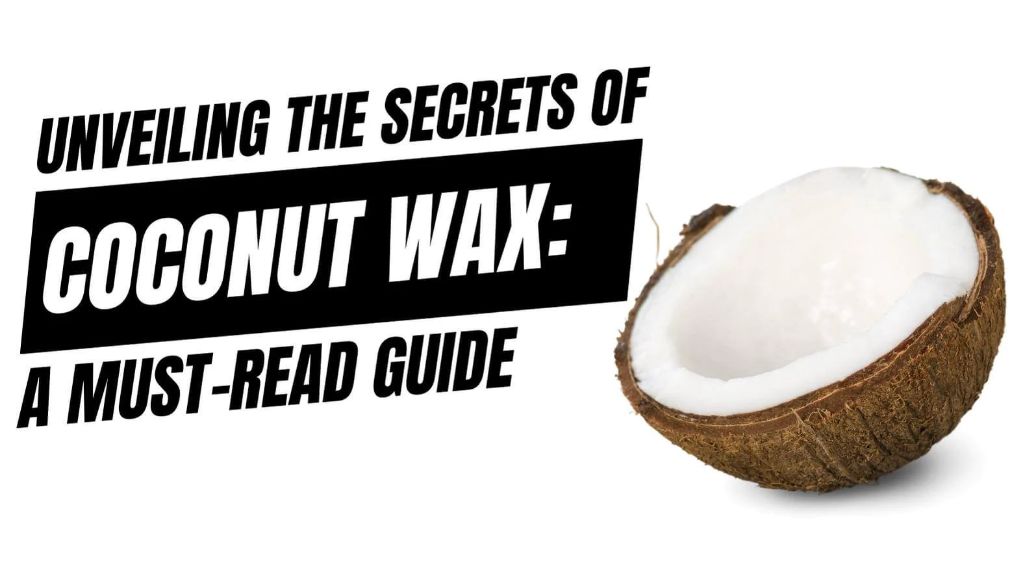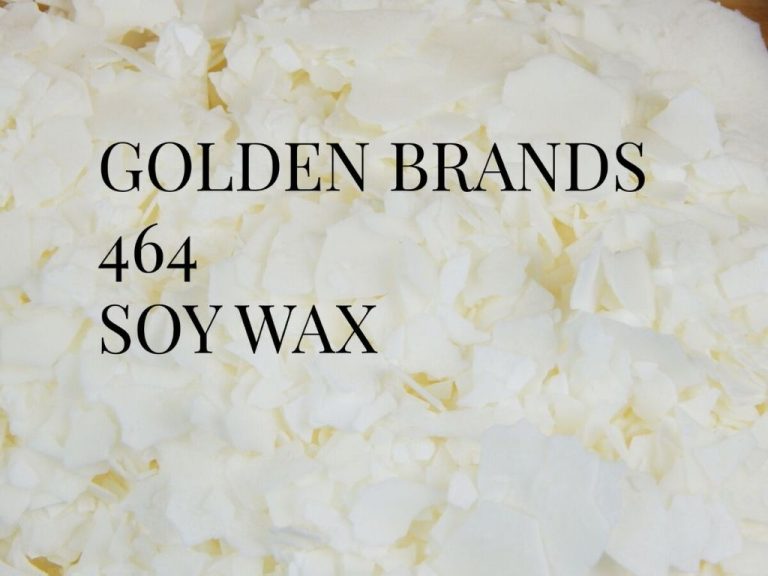What’S The Difference Between Coconut Oil And Coconut Wax?
Introduce coconut oil and coconut wax
Coconut oil is an edible oil extracted from the meat of mature coconuts. It has been used for thousands of years in cooking and cosmetics. Coconut wax is made from the oils of coconut palms. It is a vegetarian alternative to beeswax and paraffin wax. Both coconut oil and wax are popular natural ingredients, but they have different properties and uses.
Coconut oil is commonly used for cooking, hair and skin care. It is solid at room temperature. Coconut wax is popular for candle making and cosmetics. It has a high melting point which makes it ideal for candles. Coconut wax also produces less soot and burns cleaner than paraffin wax (https://www.bornbrightcandles.com/blogs/news/what-is-coconut-wax-and-why-we-use-it).
Extraction and Production
Coconut oil is extracted from the meat (copra) of mature coconuts. The copra is dried first, then the oil is extracted using a variety of methods like cold pressing, wet processing, or dry processing. Cold pressing yields the purest oil. With wet processing, the coconut meat is boiled in water before the oil separates and rises to the top for skimming. Dry processing uses heat and pressure to extract the oil.
Coconut wax starts as refined coconut oil that goes through hydrogenation, where the oil is converted to a solid wax through a chemical reaction with hydrogen. This process alters the chemical composition, converting the triglycerides in coconut oil to saturated fats. Hydrogenation requires high heat and a chemical catalyst like nickel or platinum [1].

Chemical Composition
Coconut oil is composed primarily of saturated fatty acids, with the main components being lauric acid (45-53%), myristic acid (16-21%), palmitic acid (7-10%), caprylic acid (5-10%), capric acid (4-8%), and oleic acid (5-8%) (Liu et al., 2019). Lauric acid in particular makes up nearly 50% of coconut oil.
Coconut wax, on the other hand, is made up of hydrogenated coconut oil as well as other waxes like soy wax and beeswax (Keap, 2022). The main components are fatty acids and esters. The fatty acid content comes from the coconut oil, while the esters help harden the wax. The exact chemical composition can vary between coconut wax products depending on the blend.
Overall, while both contain saturated fats, coconut oil is composed almost entirely of free fatty acids like lauric acid. Coconut wax contains those fatty acids too, but also has esters and other waxes that change its chemical structure and properties compared to pure coconut oil.
Melting and Boiling Points
The melting point of coconut oil can vary depending on the level of refinement. Unrefined coconut oil has a melting point of around 76°F (24°C), while refined coconut oil melts around 92°F (33°C) (Source). Fully hydrogenated coconut oil has an even higher melting point of 104°F (40°C).
In comparison, coconut wax typically has a melting point between 120-135°F (49-57°C), depending on the specific formulation (Source). This allows coconut wax to maintain its shape as a solid at higher temperatures than coconut oil.
The boiling point of coconut oil is around 350°F (177°C), while coconut wax boils at around 400°F (204°C) (Source). The higher boiling point makes coconut wax more suitable for candles and other high-temperature applications.
Uses
Coconut oil has many culinary uses. It is commonly used for cooking, frying, and baking due to its high smoke point compared to other cooking oils. Coconut oil adds a light coconut flavor to dishes and can be substituted for other oils or butter in recipes. It is also used as an ingredient in packaged foods like chocolate, yogurt, ice cream, and smoothies to add a creamy coconut taste.
Coconut wax is often used to make candles because it holds scent well and burns slowly with little smoke. It can also be used to make skin care products like lotions, lip balms, and body butters. The emollient properties of coconut wax help hydrate and moisturize skin. Coconut wax is sometimes used as an ingredient in hair care products too. It gives products a thick, creamy texture and helps tame frizz.
Both coconut oil and coconut wax are valued for their pleasant coconut aroma. However, coconut wax is more often used for its physical properties in candles and skin care. Coconut oil is prized for its rich flavor and versatility in cooking.
Shelf life and storage
Coconut oil and coconut wax have different shelf lives depending on storage conditions. Coconut oil will generally last 2-4 years if stored properly, while the shelf life of coconut wax is around 6 months to 1 year.
According to C.R.Y. Herbals, coconut oil can last up to 4 years if stored in a cool, dark place. Once opened, it may last 1-2 years. To maximize freshness and shelf life, coconut oil should be kept in an airtight container away from light and heat. Refrigeration can extend the shelf life, but solidification at cold temperatures means coconut oil should be brought to room temperature before use.
Coconut wax has a shorter shelf life of about 6 months to a year according to CandleScience. Like coconut oil, coconut wax should be stored in a cool, dry location away from light and heat. Keeping it sealed airtight in its original container helps preserve freshness. Excessive heat can cause the wax to sweat or lose its scent. For longest shelf life, candle makers recommend using coconut wax within 6 months of purchase.
Health Effects
Both coconut oil and coconut wax offer health benefits, but they have some differences when it comes to safety. Coconut oil is well-known for its many health benefits. It contains healthy fats like lauric acid and medium-chain triglycerides (MCTs) that provide energy and support heart health. Some research shows coconut oil may benefit skin and dental health as well.
Coconut wax is considered very safe for skin. Since it comes from coconuts, it does not typically cause allergic reactions. Coconut wax is hypoallergenic and unlikely to clog pores, making it a good option for homemade skin care products. It has emollient properties to moisturize skin. The safety profile of coconut wax is one reason it’s preferred for candles, as the wax vapors released while burning are non-toxic.
Both coconut oil and wax are considered environmentally friendly and safe, but coconut wax may have an edge for skin safety and using in candles or cosmetics where vapors are inhaled. Coconut oil remains a highly versatile oil with proven health benefits when consumed.
Environmental impact
Coconut oil and wax have a much lower environmental impact compared to other vegetable oils and waxes. Coconut palms are highly productive crops, producing up to 10 times more oil per hectare than soybeans (CocoandSoy). As a result, coconut oil and wax production is more sustainable and requires less land to produce the same quantity of oil or wax. Coconut production also does not lead to deforestation like some other crops.
In terms of carbon footprint, coconut oil and wax production emits lower greenhouse gases compared to other vegetable oils. According to one estimate, coconut oil production emits just 0.42 tons of CO2 per ton of oil produced, compared to 0.75 for palm oil and 0.99 for soybean oil (SimplyMelted). The climate where coconuts are grown also contributes to the lower carbon footprint.
Overall, coconut oil and wax have a much lower environmental impact compared to many other vegetable oils and waxes. The high productivity of coconut palms and low carbon footprint of production make coconut products more sustainable choices.
Cost comparison
When comparing the costs of coconut oil versus coconut wax, coconut oil tends to be more affordable. Coconut oil can typically be purchased for $0.15 to $0.30 per ounce from grocery stores, while coconut wax costs around $2 to $5 per pound when buying in bulk from online retailers (calcandlesupply.com).
The reason for the price difference is that coconut oil is made by pressing copra (dried coconut meat) to extract the oil, while coconut wax requires additional processing. Coconut wax is produced by hydrogenating and filtering coconut oil to achieve a higher melting point and opacity optimal for candle making. This extra processing increases the costs of coconut wax.
For hobby candle makers, the lower price point makes coconut oil an economical choice. However, those producing candles commercially may find the superior burn quality of coconut wax worth the extra investment. When calculating total candle production costs, coconut wax’s performance results in less waste and higher sales.
Key differences summarized
While coconut oil and coconut wax share a common source material, they have several notable differences:
Composition: Coconut oil is nearly 100% fat, while coconut wax contains fatty acids plus other plant waxes and compounds.
Melting point: Coconut oil becomes liquid at around 76°F, whereas coconut wax melts at over 90°F and becomes solid below that.
Uses: Coconut oil is edible and has many culinary uses, while coconut wax is not eaten and is used for candle-making, wood polish, etc.
Shelf life: Coconut oil can last 2-5 years unopened due to its high saturated fat content, while coconut wax has a 1-2 year shelf life before quality deterioration.
Sustainability: Coconut wax is considered more environmentally-friendly than paraffin wax, but less sustainable than using coconut oil itself.
In summary, coconut oil and wax have overlapping origins but diverge in chemical structure and everyday applications.




